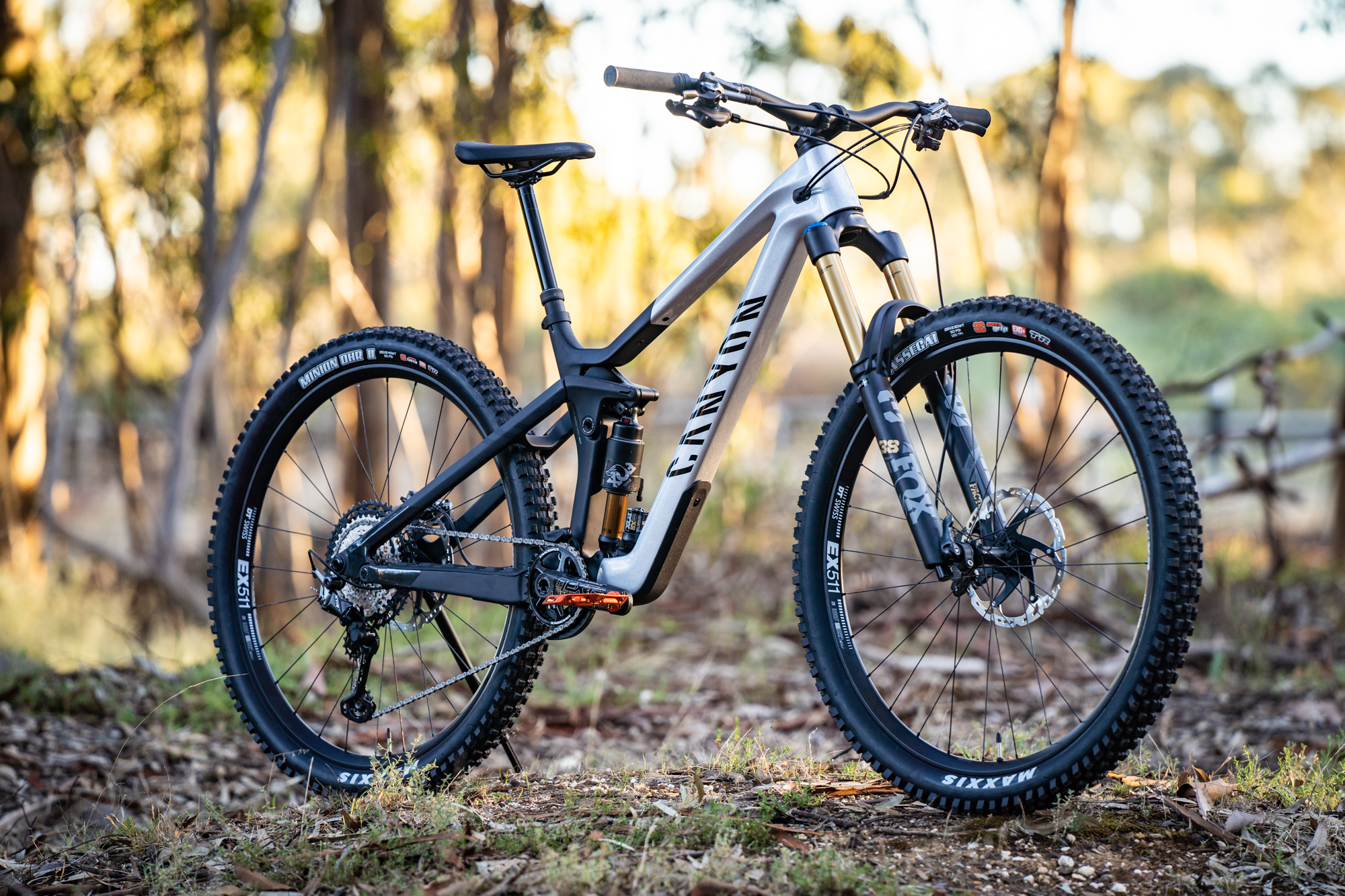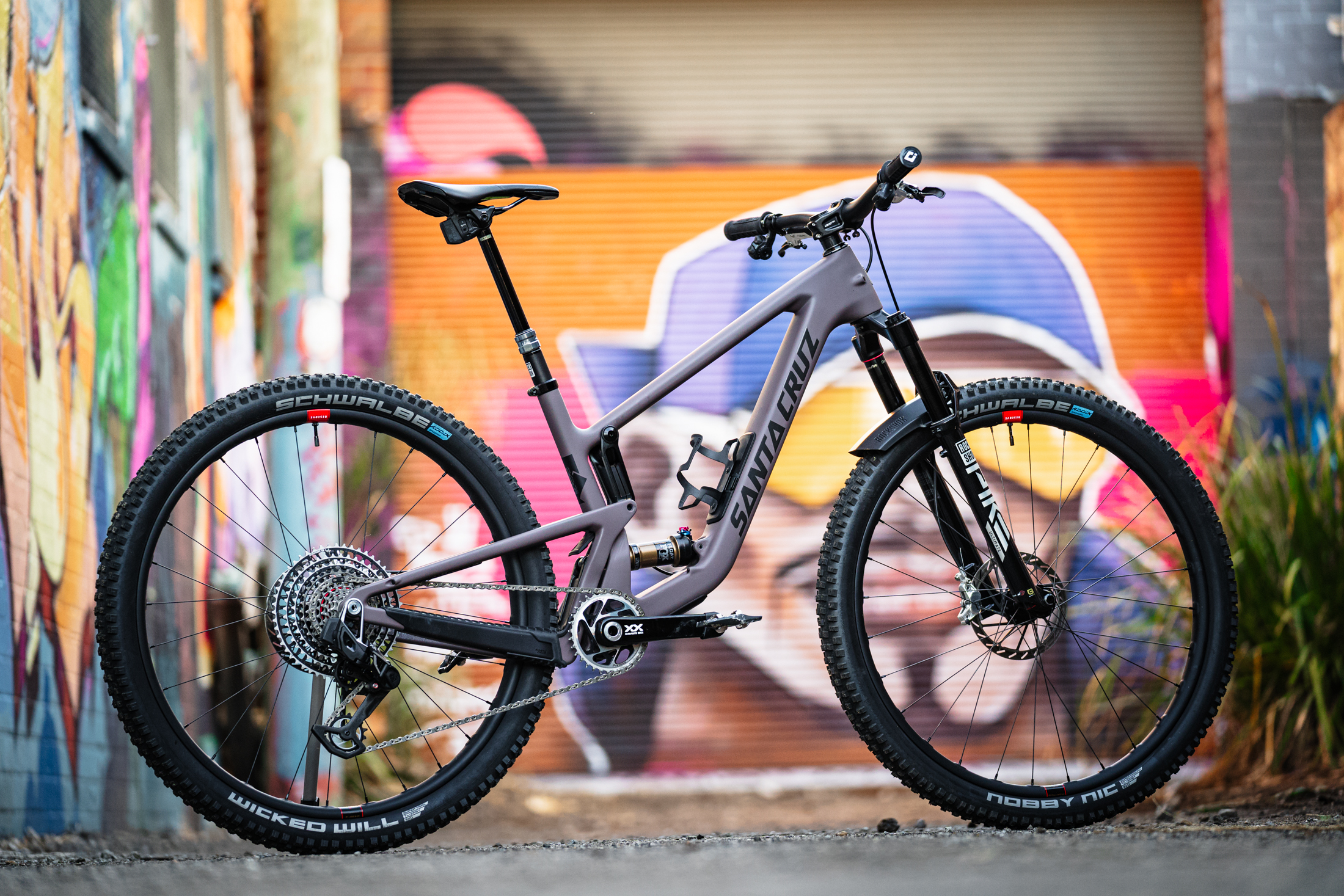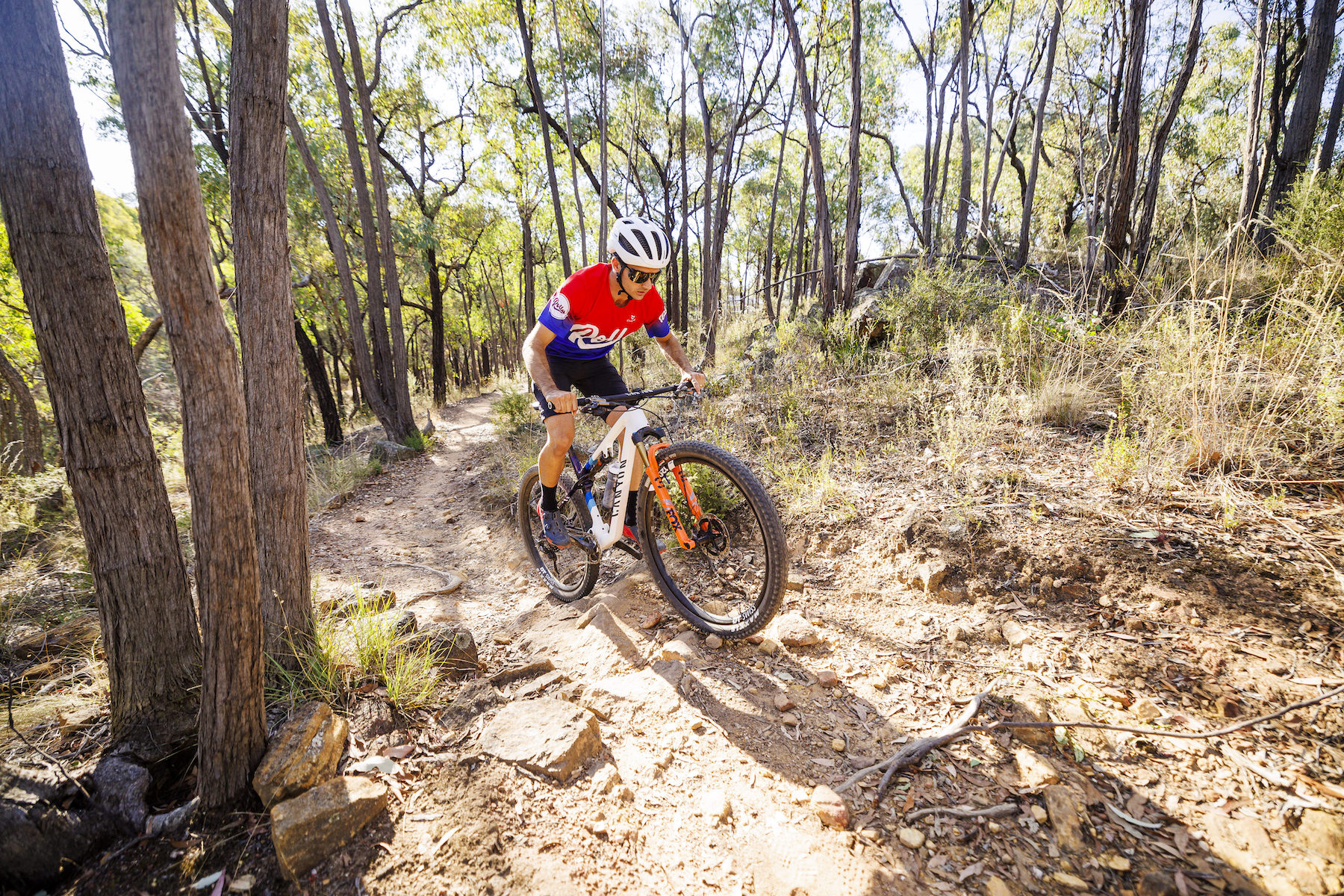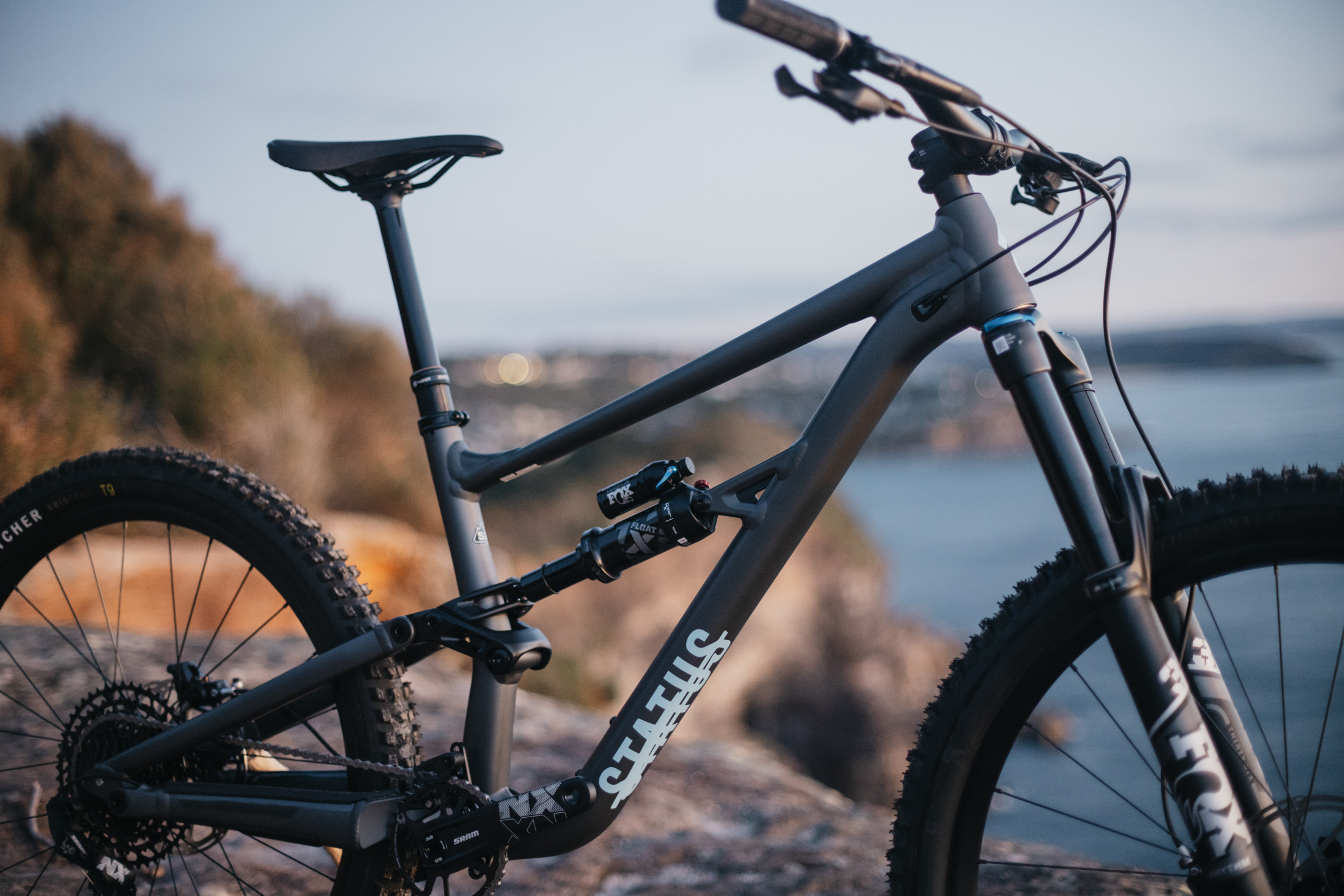Buying your first mountain bike is an exciting and sometimes daunting process. There are so many brands to choose from, lots of new terminology to understand, and more wheel size options than ever before. This guide aims to simplify the process for you and help you wade through all the information you can be bombarded with when entering a bike shop.
With this being an overview, we’re making some broad generalisations, and there will be exceptions to every rule. The purpose is to help you better understand all the variables and start you off on the journey of selecting your next bike. We have broken down the information into our top 10 factors to consider.
How much should you spend on your first mountain bike?
Your budget will be the biggest deciding factor. Thankfully, improvements in components and geometry have trickled down to even entry-level mountain bikes, making it hard to buy a genuinely bad bike these days. Below is a rough guide for what you can expect to get for each budget range. This range is for new bikes and does not take into consideration the second-hand market, which can offer great deals on barely used bikes if you know where to look.

- Entry Level $1,000 – $2,500 AUD: Well-equipped hardtail (no rear suspension) or very low spec dual suspension bike (suspension front and rear). We would probably avoid dual suspension bikes in this price range as serious compromises will need to be made to keep the cost so low.
- Mid-Range: $2,500 – $5,000 AUD: Carbon-framed hardtail with good components or reasonable-spec’d alloy dual-suspension bike. This is the sweet spot for your first serious mountain bike. If you can afford something in this range, you will be able to get a bike with all the key components, such as a dropper post, 1x drivetrain, and modern geometry. At the upper end of this price range, you can get some very well-equipped alloy bikes, especially from consumer-direct brands.
- High-End $5,000 – $10,000 AUD: This range should get you a ripping dual suspension mountain bike in both alloy and carbon. Alloy bikes will feature high-performance components with few compromises, while carbon bikes will see slightly cheaper parts because the frame eats up more budget. You should start to see some added features like in-frame storage and adjustable geometry from certain brands.
- Top End $10,000+ AUD: It’s hard to go wrong with any bikes at this price point. The higher you go, the more exotic materials, gold-flavoured low-friction coatings and wireless shifters you’ll find — with diminishing returns on your investment.
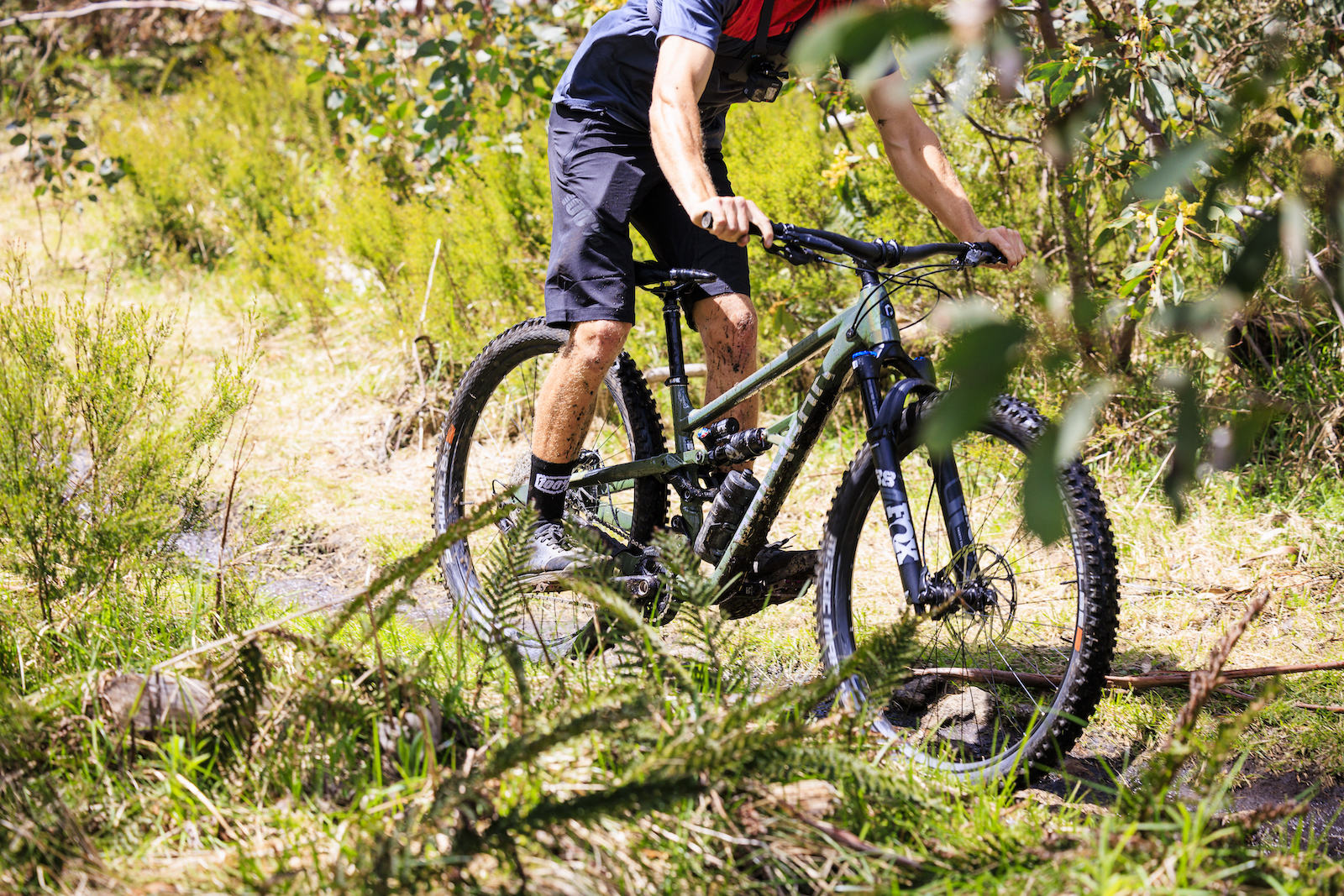
What wheel size should you select for your first mountain bike?
Wheel size selection is not as simple as it used to be, however, there are some general rules and guidelines that can help you get started. The two main choices are 29 or 27.5in wheels front and rear, however there is a third option gaining steam — the mullet. Mullet bikes have a 29in wheel up front and a 27.5 in the back. Which of the three options you choose should be influenced by the type of riding you do and, in some cases, your height.
29in Wheels
The larger wheel diameter is known for being able to roll over obstacles more easily and the ability to carry speed. Where they can come unstuck is on tight turns and switchbacks. This is where the bigger hoops and longer wheelbase can feel cumbersome and slower than a smaller wheeled bike. Commonly found on race bikes across all disciplines, 29ers are designed for flat-out speed.

27.5in Wheels
These are known to be more playful and easier to maneuver on the trails. They are still found on race bikes, but usually on very small frames because this pint-sized rider may struggle to get their weight back on a full 29er, or they may find the extra weight of the bigger wheels challenging to control. You often see 27.5in wheels on dedicated freeride and bike park sleds. The smaller wheels can help riders flick the bike around on the trails and make any aerial moves easier. The bike will be shorter, and the rotating mass of the smaller wheels assists in helping the bike be more agile.

Mullets
Next up is the combo of the two-wheel sizes, commonly called a mullet. Mullets usually combine the 29in front wheel with a 27.5in rear, however on the freeride scene, you sometimes see custom 27.5in front-wheeled bikes with a 26in rear. The selling point for standard mullets is that they can still offer the improved rollover ability of the 29er up front with the faster handling traits of the 27.5in wheel in the back. This combo is becoming extremely popular on the downhill circuit as it can allow riders to balance speed and control on the gnarliest tracks, but we’re seeing more enduro and even trail bikes with small rear wheels. Not every bike can be run as a mullet, as the smaller circumference drops the bottom bracket and can compromise the geometry of the rest of the bike. That said, some bikes can be run as either a 29er or mullet thanks to a flip chip that adjusts the geometry to accommodate for the different-sized wheels.

How much suspension travel does your first mountain bike need?
Suspension travel opens a whole new series of decisions for buyers, and there are now so many combinations of front and rear squish. To simplify things, we will just focus on the three common groupings of suspension travel: cross-country, trail, and enduro. We won’t look at downhill bikes as that is a hyper-specific niche, and unless you live somewhere with a chairlift, it’s probably not a great option for a first-time mountain biker.
Cross Country Bikes
XC bies commonly have 120mm of travel or less and can either be a hardtail with no rear suspension or a full suspension bike with anywhere from ~80mm of rear travel on bikes like the Trek Supercaliber or up to 120mm like the Scott Spark. Bikes within this travel range will typically pedal well with faster handling characteristics. Frames are lightweight and stiff; it is all about pedal efficiency and putting down the power. These bikes will climb like a rocket but may feel unsteady and sketchy on steep, fast descents. The traits that help them pedal and ascend so well, such as steeper head angles and lower front ends, are what can make them handle like a scared cat on the descents.
Geometry has come a long way in recent years, and these bikes are more capable than ever, so do not rule out a cross-country rig too soon. It is always best to try a bike out first before making your big decision. If this sounds like the type of riding you are into, make sure you check out our Top 8 Best XC Bikes article, where Will covers his picks for the best bikes in this category.

Trail Bikes
This category covers the broadest range of suspension travel, terrain and riding styles — think of it like a jack of all trades with two wheels. Starting right where cross-country bikes finish with 120mm of travel up to bikes with 160mm suspension travel. Generally speaking, the more travel a bike has, the better it will descend, but this will usually come at the expense of its climbing ability and weight. Within this category, the suspension designs and kinematics vary just as much as the travel range, and each will feel slightly different. Certain brands are known for their suspension linkages. Giant is famous for their Maestro design, and Pivot is among the few that license the famed dw-Link. Because of this, it is a great idea to get some time on several different bikes to see how their suspension designs react to bumps and pedalling inputs.
Trail bikes cover such a broad range of riding styles and terrain, it is difficult to define such a large category. Very generally, trail bikes can cover riders who just like to get out for a spin with their mates on the weekend and want a bike that can do a bit of everything through to folks who want to race enduros. To help see how broad a category trail bike is, check out our Top 12 Best Trail Bikes article.

Enduro Bikes
One of the fastest-growing categories is enduro. These bikes are now more capable than ever, even to the point where some enduro bikes have been raced on the downhill World Cup circuit, we have seen both the Forbidden Dreadnaught and Norco Range paired with dual crown forks donning UCI number plates. The suspension range usually starts around 150/160mm in the rear and up to 180mm in the front.
With increased travel at both ends, these bikes are typically heavier than trail bikes and feel more cumbersome on the climbs. In saying that, with improvements in geometry, the climbing position can be comfortable. And if there is no rush to get to the top of a hill, the increase in weight often does not matter. Enduro bikes will usually have longer top tubes and wheelbases. This will increase the stability when descending and tackling technical terrain, but it also makes tighter turns a little trickier as you have more bike to take with you around the bend.

How do you select a mountain bike based on your local terrain?
Your riding style and the terrain around where you live are crucial factors when choosing the right bike. It is easy to get caught up in the advertising hype of your favourite bike brand, encouraging you to get the biggest, burliest trail-smashing monster. But if your local tracks are flat and mellow, this might not be the best way to spend your money. Be realistic when thinking about your local trails — if you’re unsure talk to the folks at your local bike show and/or local mountain bike club — you could save money by selecting a shorter travel bike that is better suited to your tracks than going full enduro with your bike choice. Longer travel bikes can often feel slower and sluggish on flat, mellow trails, this can take the fun out of a track that could be enjoyed more, with a playful short travel bike.
If you are planning to race a specific discipline, such as cross-country or enduro, then this will usually guide you in the type of bike you should get. In general, Australia does not have as much elevation as other countries. So, you will often see our local enduro racers on longer-travel trail bikes instead of full-blown enduro rigs.
Understanding geometry and how to choose the correct mountain bike size?
If you are getting back into riding after an extended break, you might find the sizing of new bikes confusing. An increasing number of brands have moved away from the standard XS through to XL, and the evolution of mountain bikes means what was considered a large frame size a few years ago is now more like a medium or even a small for some brands.
More riders are sizing bikes based on reach (the horizontal distance from the centre of the bottom bracket to the centre of the head tube), and folks are sizing up or down depending on whether they want stability or agility. This is where getting on the bike before you purchase it is important.
Finding the right size frame isn’t as black and white as it once was. Previously, standover height was a limiting factor, however, seat tubes have been shortened to allow for longer travel dropper posts, and in turn, standover height has become just about a non-issue.

Companies like Specialized and Merida have also changed the wording of their sizes to bring the focus to the reach measurement. So, make sure you research each brand and check the geometry chart to see how the varied sizes compare. We like to use Geometry Geeks when comparing bikes side by side.
What may narrow your bike choice is what brands your local shops carry. Many outfits like Canyon, Commencal and Nukeproof offer direct-to-consumer purchasing, which helps lower the bike’s cost. But can make the process of double-checking the sizing difficult.

What frame material should your first mountain bike be?
The two most common frame materials are carbon and alloy. Usually, the biggest difference between the two will be price. Carbon frames come with a higher price due to the labour-intensive production processe needed to make these frames.
Frame weight is often a selling point for carbon frames as they usually weigh less than the alloy equivalent. However, longer travel bikes usually need more carbon around certain sections of the frame to ensure they are strong and durable enough. This can close the gap between the weight of frames made of either material — though carbon still has the edge.
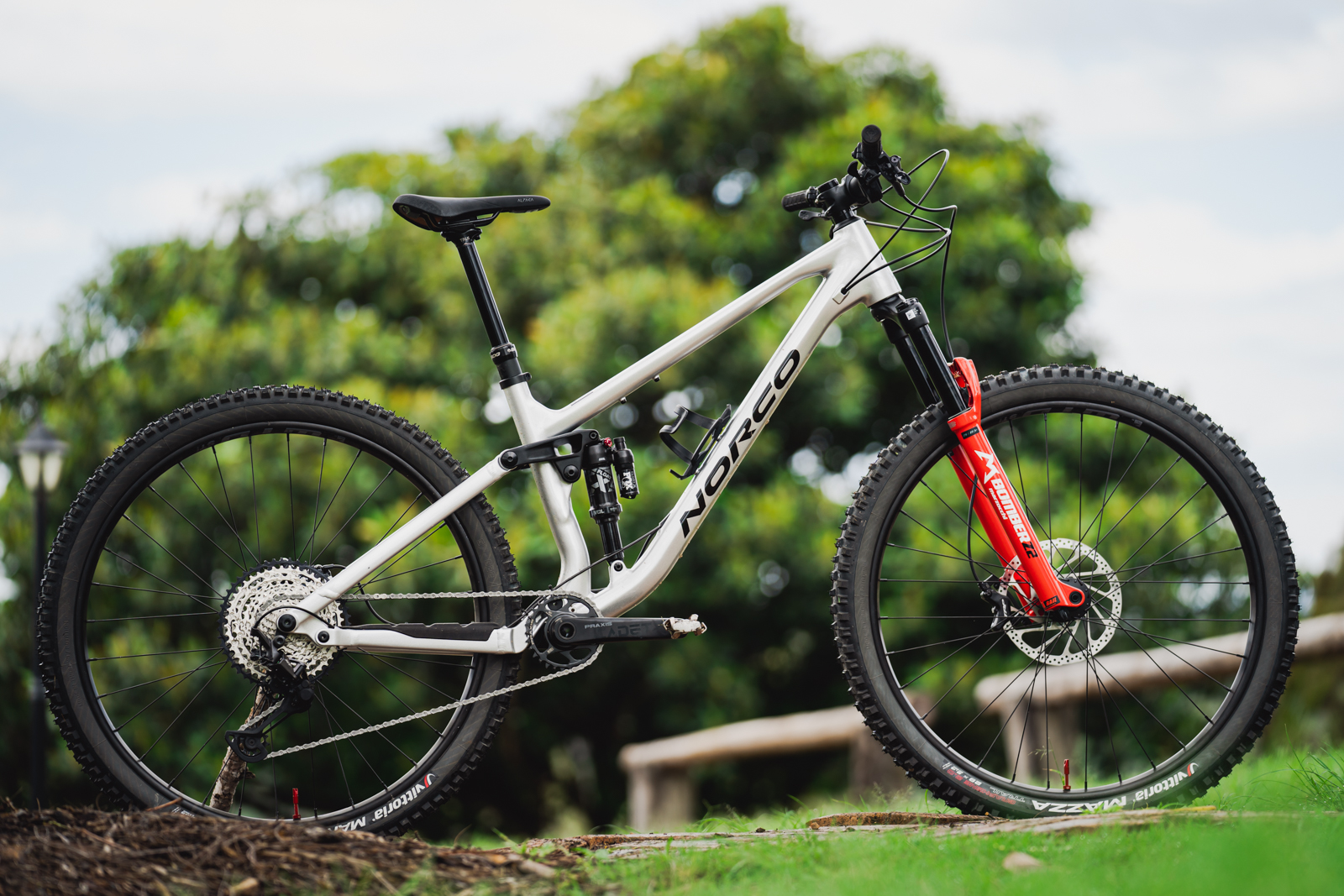
The next difference will be riding characteristics. Typically, carbon frames are generally stiffer than alloy and in some scenarios, this can mean the bike will feel faster as it can transfer power more effectively to the pedals. The unique layup of the fibres can also quiet some of the high-frequency trail noise that is transmitted through the bike to your hands, feet and derriere. The downside to the stiffer frame can be that on rocky, rougher tracks, some frames may transfer the impact from hitting these obstacles to the rider, making for a harsh feel.
Alloy frames can be more compliant and absorb some of the impacts and harshness from the trails, providing a smoother ride feel. The downside is that some power and steering precision may be lost due to flex in the frame, and the extra weight could make longer climbs drag on.
If the bike you are looking at is carbon, it is worth asking if there is an alloy version. Norco, for example, offers three carbon and three alloy versions of their Sight trail bike. The Sight A1(alloy) comes with better components than the C3 (carbon) and is also much cheaper. So, if frame material is not that important to you, there could be a better deal in an alloy version of the same bike.
The above considerations are general, and there will always be bikes and frames that do not fit the statements made above. As technology and designs continually improve, the difference between the two is decreasing. Like most options with bikes, a lot will come down to rider preference and budget.
Popular first upgrades for your first mountain bike
Upgrading your bike just after buying it might be tough to stomach, however, it can be strategic. You could buy a slightly cheaper bike with lower-spec components if the frame and the suspension are what you are after. With the money left, you could purchase your desired wheelset, brakes, or drivetrain parts and sell the original components to help bring down the overall cost. This process is not for everyone and does require some basic mechanical skills, however, it can be an effective way of getting the bike you want without having to fork out for the next model up. If you are looking at going down this path, make sure you are competent in swapping out the components or budget some extra costs to cover your local bike shop doing the work for you.
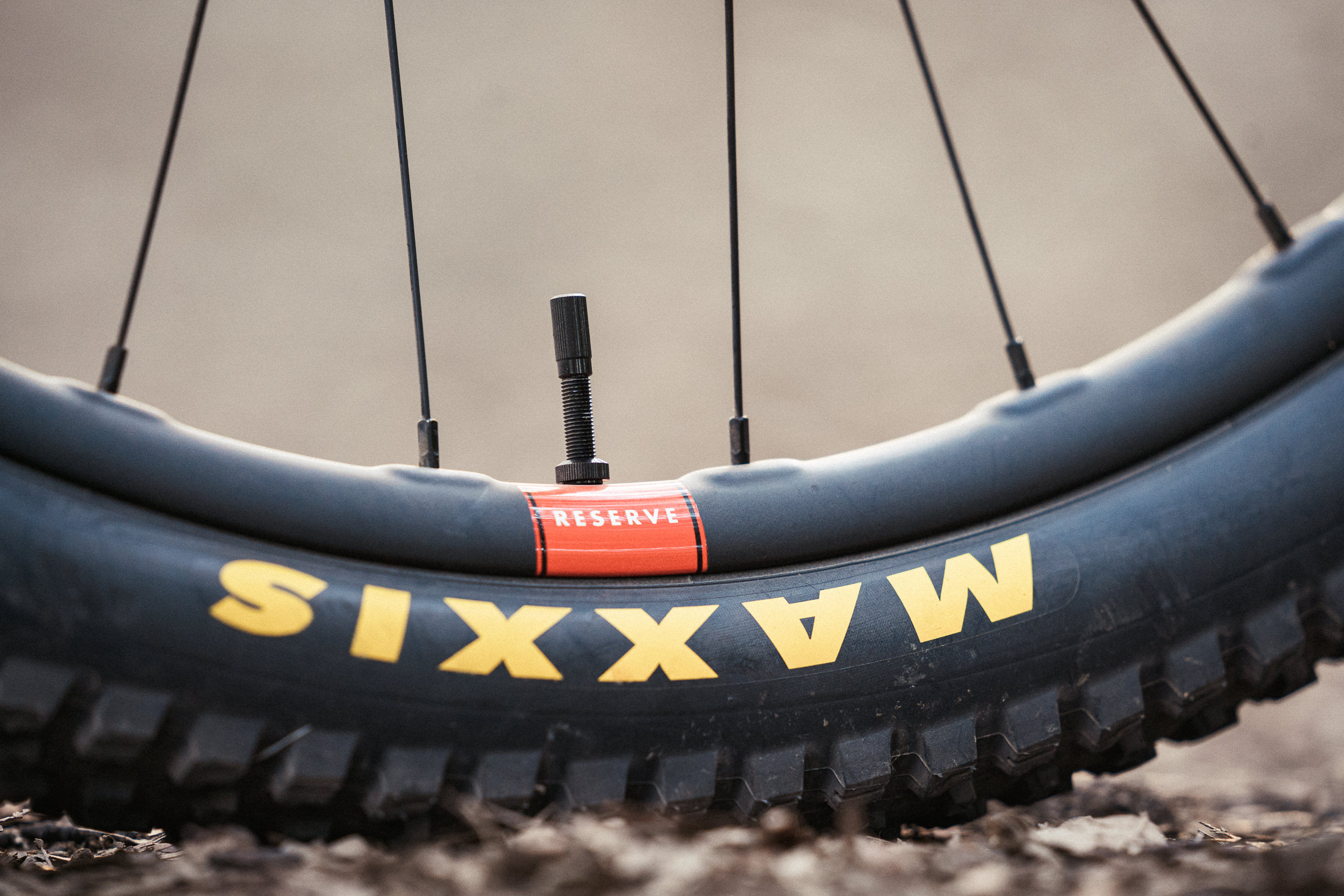
Handy features to look out for
Some bikes come with extra selling points, such as in-frame storage and adjustable geometry. Specialised, for example, have their Storage, Water, Air, and Tools (SWAT) in frame storage on many of their frames. This is a fantastic way to store spares, a multi-tool, snacks, and, in the case of the current Stumpjumper EVO, more water. Other brands, such as Norco, Canyon, and Merida, offer extra mounting points on the frame for tools, tubes, etc. These features are worth considering and can be helpful for those not wanting to ride with a pack.
Adjustable geometry is another selling point being offered by many brands. It can allow you to tweak the bike’s head angle, bottom bracket height, reach, the progression rate of the rear shock, and sometimes chain stay length. While these features can be great for riders who like to tinker, they can also open a can of worms. Along with geometry changes, some frames are mullet compatible, meaning they are a full 29er bike that can swap in a 27.5-inch rear wheel with the flip of a chip (usually somewhere in the suspension linkage) and still retain the factory geometry numbers.

Mountain Bike Warranty Coverage
Warranty periods can vary quite a lot from brand to brand, companies such as Santa Cruz and Merida offer lifetime warranties on their frames. Others, like Norco, usually have a 5-year warranty. It is always worth checking how long a bike’s warranty period is and what it covers. Some brands/shops will even allow you to transfer the warranty to a second-hand buyer if you sell the bike.
The other thing to consider is the components on the bike, as these are covered separately by their manufacturer, and again, warranty durations can vary. Fox suspension comes with a one-year warranty, while RockShox will have two years. Some brands will stipulate what conditions they warranty their product for and those that exclude it. Be wary, as some brands will not warranty a product if it is raced on.

Related:
Hopefully all of the above gives you a good idea of what you’ll need to get out on the trails! There’s a load of information out there, for more information on bikes you can check out reviews section, or to plan your next riding trip head over to our Destination Hub.
